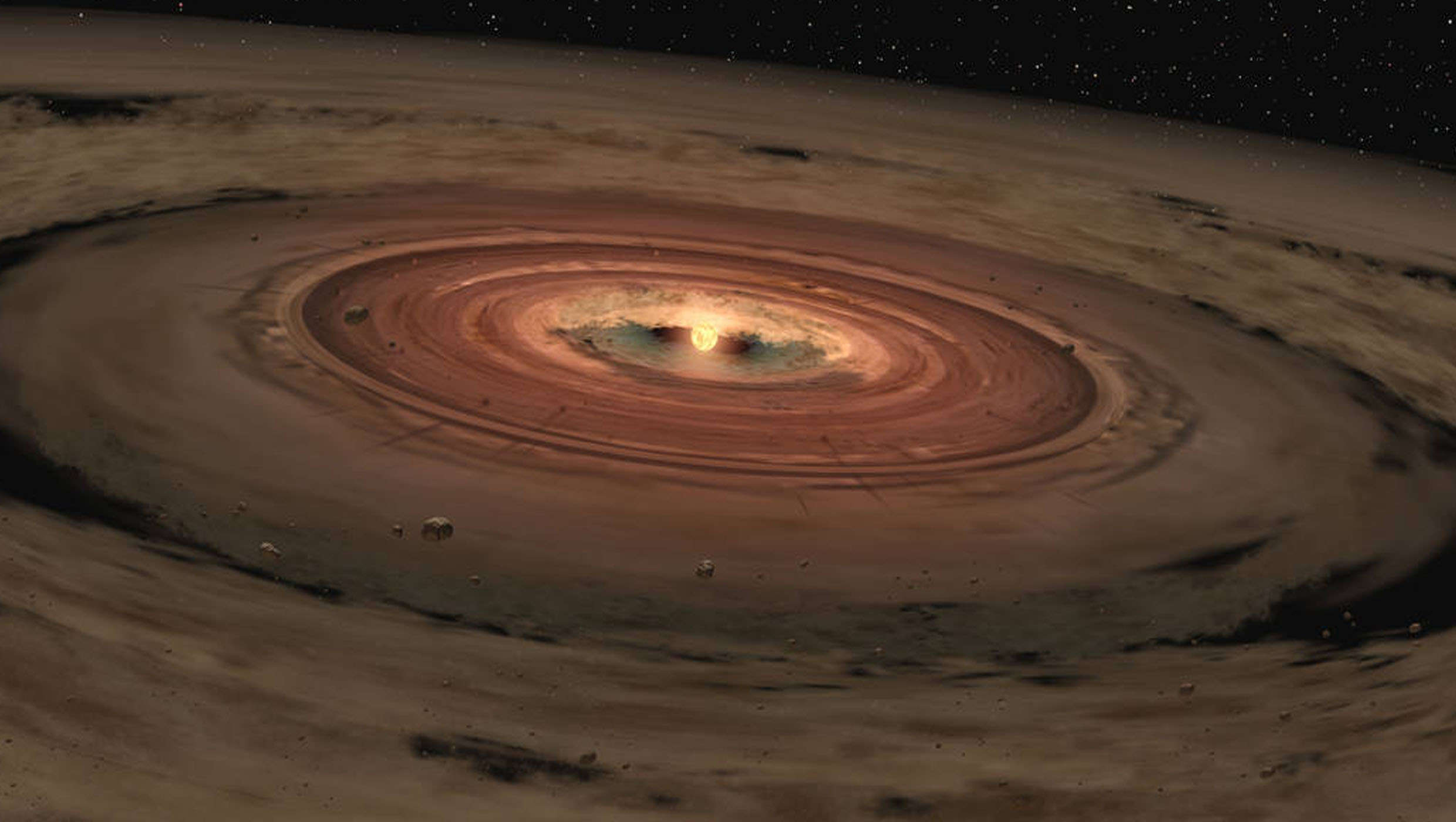Create a free profile to get unlimited access to exclusive videos, sweepstakes, and more!
If you hit rewind on the solar system, what would it look like?

You know how you end up having to make at least one model of the solar system (for the science fair or otherwise) before the eighth grade? That arrangement of wire and foam spheres, colored in to look vaguely like the planets, isn’t what it started out looking like.
The solar system has been reshuffled by gravity since it first formed billions of years ago. Jupiter and Saturn were partly the culprits, since the immense gravity of each of these gas giants was enough to send things flying out of order. Now scientists from Lawrence Livermore National Laboratory (LLNL) are trying to reconstruct the nascent solar system by studying the unique signatures of isotopes found in meteorites that escaped the asteroid belt between Mars and Jupiter. These are most of the meteorites that have fallen to Earth.
Revealing the stuff that made up these meteorites gave away that the asteroids they broke off of — at least a hundred of them — formed in the near and far reaches of the solar system.
“As the largest planets in the Solar System, Jupiter and Saturn must have grown very quickly to collect enough dust and gas before the Sun ultimately ignited blew away the remaining primordial gas," LLNL postdoc Jan Render, who led a study recently published in Earth and Planetary Science Letters, told SYFY WIRE. "We also see two chemically and isotopically distinct populations of objects in the asteroid belt that must been spatially separated for several million years, probably by Jupiter, in the early Solar System."
The asteroid belt is swarming with millions, possibly billions, of asteroids and meteorites, from tiny fragments to monster space rocks like dwarf planet Ceres. It used to be assumed that the asteroids and meteorites in this belt were what was left of a planet that was crushed. They are actually heterogeneous pieces of the solar system whose isotopic and chemical signatures could put together an image of what the solar system must have looked like in its early days. Within the asteroid belt, there actually is rubble from cosmic collisions, but these remnants are all distinct groups of asteroids that each came from different parent bodies.
Planets form by accreting from what start out as particles of dust and stick together to form larger and larger pieces of rock. It probably wasn’t uncommon for pieces of these embryonic planets to smash together, and some of that refuse is now still floating around in the asteroid belt. When planets are taking shape, they also develop unique chemical signatures depending on where they formed. This is why Render and her team were particularly looking for unusual isotopes that arose from nucleosynthesis, the process by which atoms more complex than hydrogen form in space.
"Samples of meteorites show a quite large diversity in both chemical and isotopic compositions, which tells us that the asteroid belt in itself is also chemically and isotopically diverse," Render said. "However, large parts of the asteroid belt remain unsampled. It is therefore difficult to infer a representative compositional average of the entire asteroid belt, but we can now confidently say that the meteorites we investigated in our study formed in a specific sequence relative to one another."
Nucleosynthesis is thought to have started happening within moments of the Big Bang. New atomic nuclei would come into being from nuclear reactions, and these reactions varied from region to region of what is now the solar system.
Meteorites known as basaltic achondrites may have some of the answers. The makeup of these is similar to basalt, an igneous rock found on Earth that usually forms out of lava belched out by volcanoes. Being achondritic, as opposed to something like a carbonaceous chondrite, means they have no chondrules, or tiny round pieces of silicate, embedded in them. What the scientists were looking for were isotopes of neodymium (Nd) and zirconium (Zr). These atoms would have the same number of protons in their nuclei as the original element, but more or fewer neutrons. Isotopic signatures in the samples showed evidence of presolar stuff that had been scattered all over at the dawn of the solar system. Render believes that there are parallels between such isotopes and other clues about planetary formation.
“The gradient in isotopic compositions that we found in our study appears to correlate very well with other proxies that indicate formation distance from the Sun, such as water content," he said. "Increasing proximity to the Sun can be seen in many isotopes of several chemical elements like neodymium, zirconium, molybdenum and ruthenium. This ultimately tells us that this isotopic gradient must have been universal throughout the early Solar System and probably related to one or multiple presolar phases that were heterogeneously distributed. "
Too bad there isn’t an actual rewind button on one of those meteorites.














